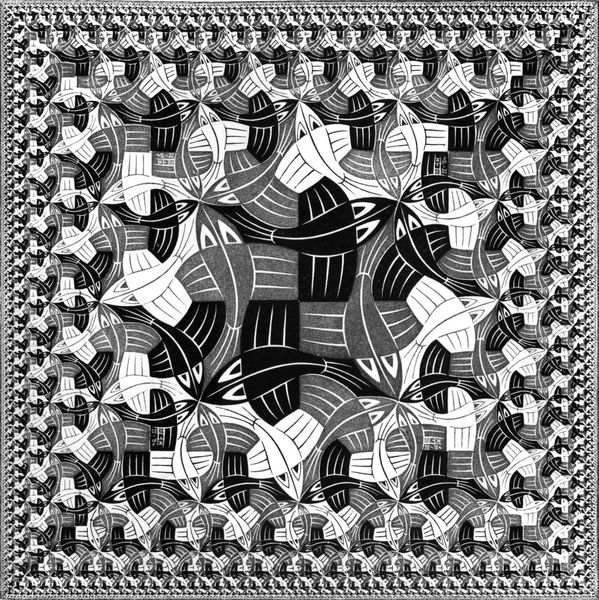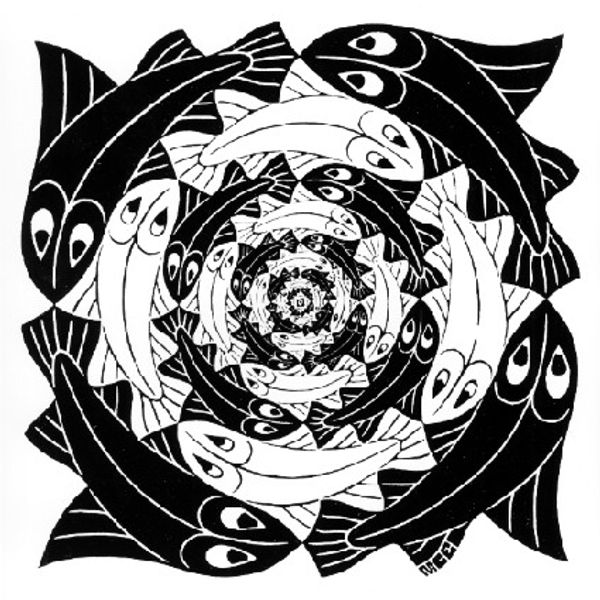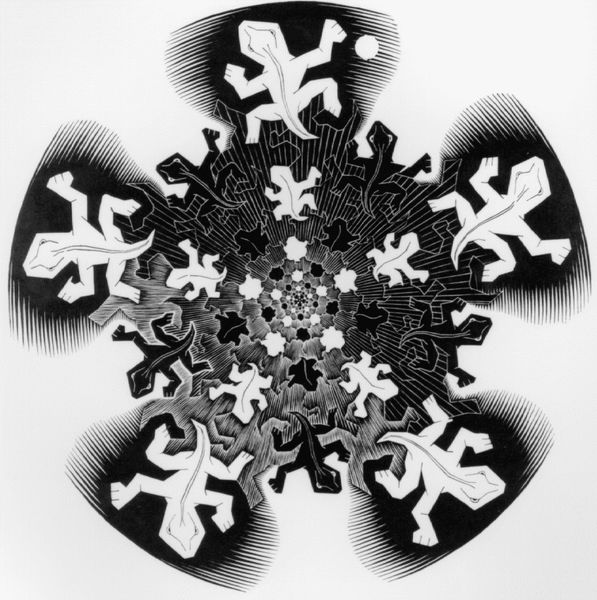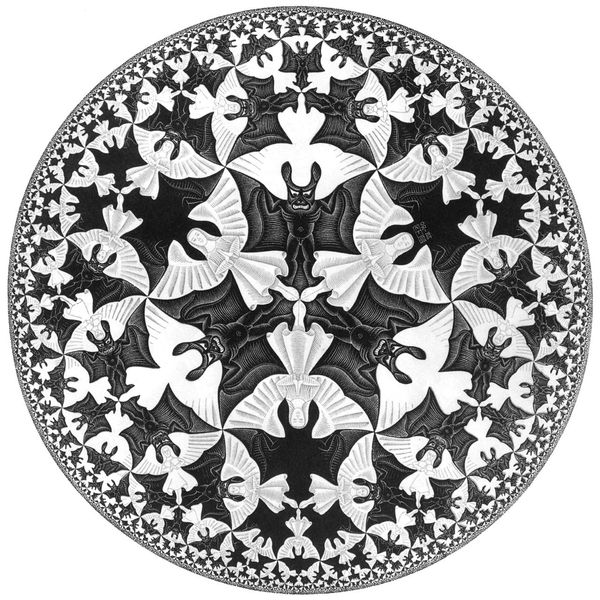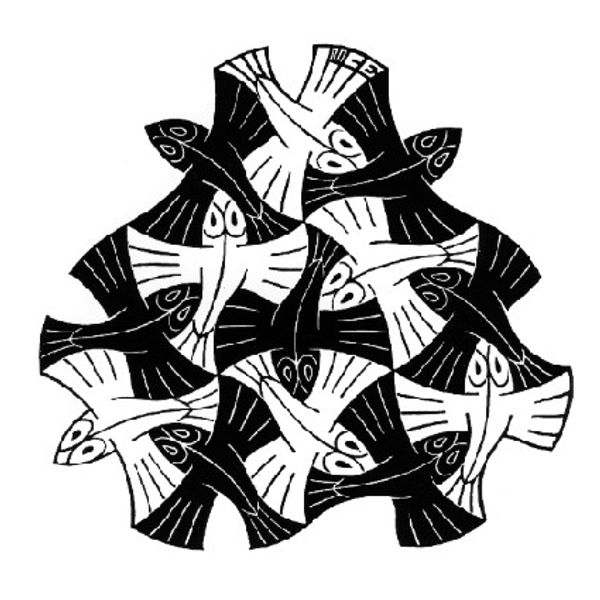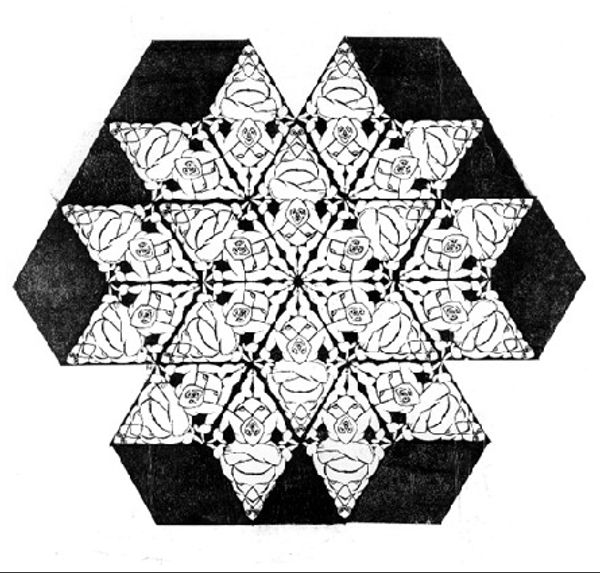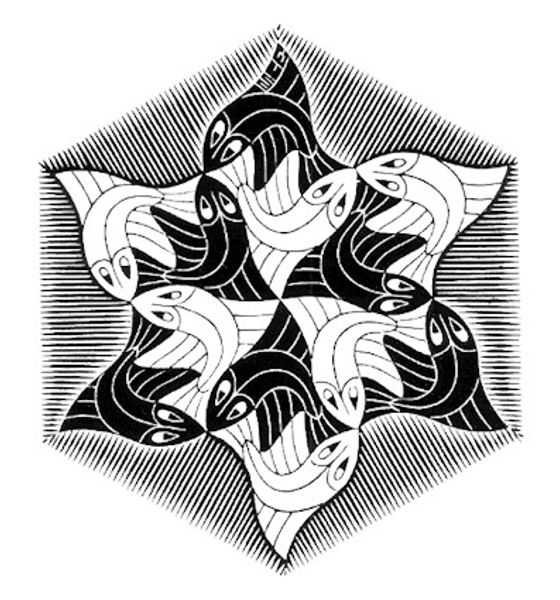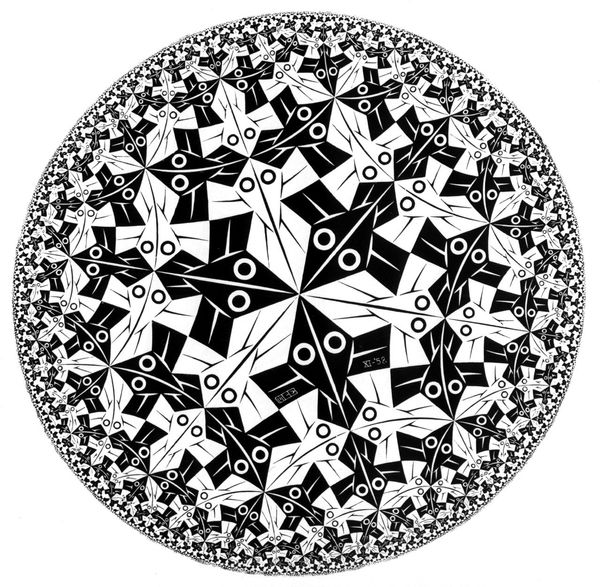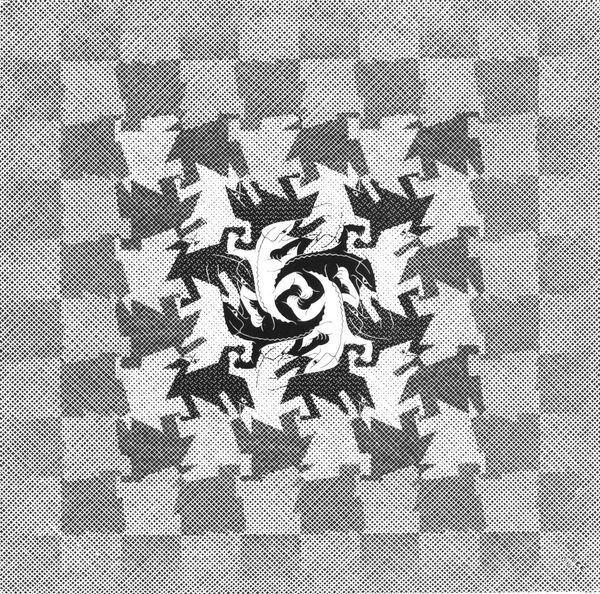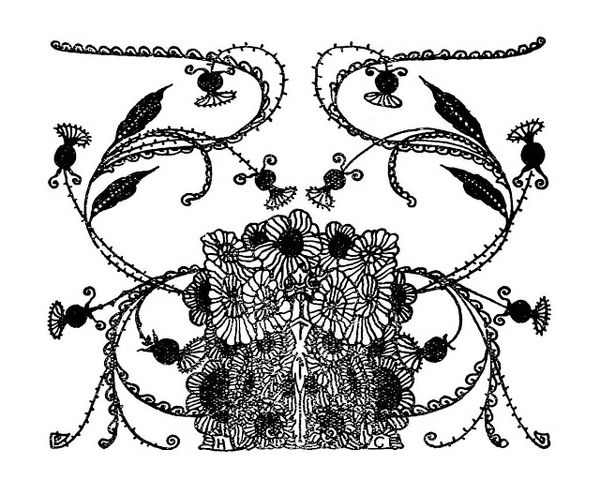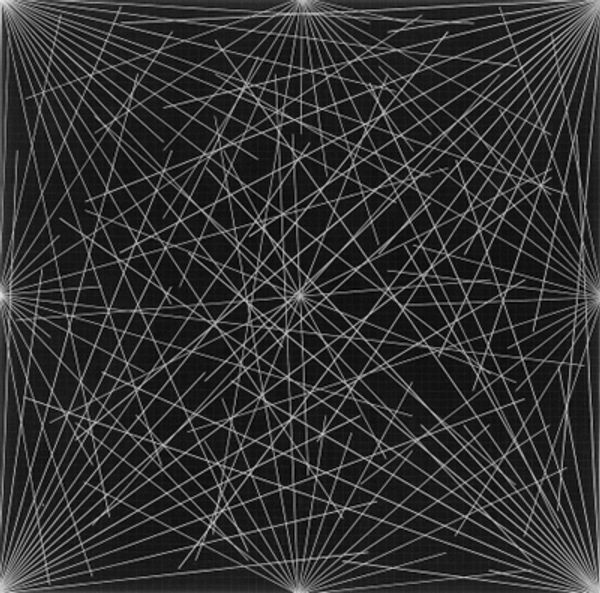
Copyright: M.C. Escher,Fair Use
Curator: Here we have M.C. Escher’s "Smaller & Smaller," a drawing, likely a print given the medium, from 1956. What are your initial thoughts? Editor: I’m immediately struck by how dizzying this image is. The composition, spiraling inward, creates a real sense of unease. It feels like being pulled into a vortex. Curator: Indeed, Escher expertly employs tessellation here. Observe how the amphibian forms lock together, creating a continuous pattern. It’s a fantastic illustration of mathematical principles translated into art. We should note that many art historians classify this artist as exhibiting qualities that belong to modernism and mannerism. Editor: I agree that there is a formal brilliance at play, but what interests me is how this obsessive repetition reflects broader anxieties of the mid-20th century. The Cold War, mass conformity, and the fear of the individual being swallowed by the collective come to mind. Curator: That’s an interesting reading, contextualizing Escher within the sociopolitical landscape. From a formalist standpoint, the stark contrast between black and white amplifies the optical illusion. Each element is meticulously rendered. It becomes difficult to disengage oneself from the optical properties once engaged. Editor: Precisely! The limited color palette, alongside that unrelenting repetition, gives the image a clinical, almost dystopian feel. Are we meant to admire the aesthetic order or question its underlying implications? It suggests to me how easily patterns and structures, even beautiful ones, can become instruments of control or, at least, control the eye of the observer. It is a composition of ever "Smaller & Smaller" details which reflect something bigger. Curator: Control could be suggested as well from a compositional point of view. The focal point dominates all and makes it extremely difficult to examine other visual aspects, and perhaps other ways of thinking, within the tessellated image. I see Escher presenting the viewers a mathematical playground more than a social critique, myself. But that's just my initial thoughts, from what you've pointed out. Editor: I'm glad we explored the alternative readings and viewpoints found in this mesmerizing work by Escher, it seems relevant and appropriate for our moment. Curator: Agreed! Its meticulous pattern invites endless introspection into both artistic intention and sociocultural interpretation.
Comments
No comments
Be the first to comment and join the conversation on the ultimate creative platform.
